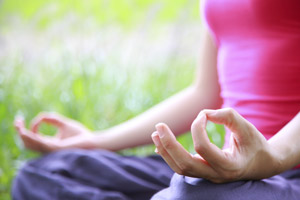
Mindfulness and Recovery
In his book “The Mindful Path to Addiction Recovery: A Practical Guide to Regaining Control over Your Life,” Dr. Lawrence Peltz describes mindfulness as “… a powerful accompaniment to the recovery, psychotherapy, and medicine an alcoholic or addict needs. In essence, mindfulness is the quality of awareness that sees without judgment, shining a light on each moment just as it is. This includes physical sensations, feelings, thoughts and the nature of our experience continually shifting and changing. With practice, it is a skill that can be developed by anyone.” The first step in developing this important recovery skill is learning to slow the mind down, relax, focus and “ … shine a light on each moment just as it is …” There are many paths to this mind-state, such as seated meditation, walking meditation, breathing exercises, and the practice of yoga postures. What follows is a simple meditation/breathing exercise borrowed from yoga called savasana—or, the relaxation posture.
Beginning Breathing/Meditation Exercise for Recovery
This exercise has been used for centuries to close yoga classes. It is simple, effective, and very powerful.
- Find a quiet place on the floor with enough room to lie down comfortably. Lie on a yoga mat or blanket. A soft carpet will do fine, as well. Find a comfortable position with your legs straight along the floor, and your arms on the floor beside you, palms up. Ideally, you will not need a pillow beneath your head. If you need to, bend your knees or place a pillow under your knees to relieve pressure on your lower back.
- Close your eyes and bring your attention to your breathing. Begin by inhaling fully and exhaling completely. Use a little bit of effort in your lower abdomen as you exhale to empty all the air out of your lungs. At the end of the exhalation, simply relax, and let the air rush back in. Do this four or five times.
- Allow your breath to return to its natural rhythm. Focusing only on your breath, inhale and exhale ten times. It doesn’t matter how many times your mind wanders; it only matters that you call it back to your breath every time.
- Begin to focus on immediate physical sensations: the feel of the floor against your body beneath you, the different textures against your skin—your clothes, the carpet, any jewelry you might be wearing, anything touching your skin that’s always there but you forget about, such as eyeglasses, etc … Do a head-to-toe inventory of your sensations.
- Bring your attention to your feet. As you inhale, gently tense all the muscles in your feet, and as you exhale, relax them completely. On the exhalation, imagine all the muscles of your feet relaxing, releasing and melting away into the floor.
- Repeat this same pattern for your whole body. Inhale; gently tense. Exhale, relax and release. Imagine your muscles melting off your bones, relaxing into the floor. After the feet, go in this order:
- Ankles—for joints, as you exhale, imagine plenty of space between the bones for everything to work perfectly.
- Calves
- Front of shins
- Knees
- Front of thighs (quadriceps)
- Back of thighs (hamstrings)
- Glutes
- Lower abdomen/pelvic floor
- Lower back
- Middle back
- Upper back
- Middle abdomen, ab muscles
- Rib cage
- Chest
- Shoulders
- Upper arms, front and back
- Elbows
- Forearms
- Wrists
- Hands
- Neck
- Scalp
- Forehead
- Face
- Jaw
- When you finish the sequence and reach the jaw, return to your forehead and consciously smooth out the lines. Imagine your face clear and unlined, like that of an infant.
- Remain in this state of relaxation for at least 10 breaths. As thoughts enter your mind, simply watch them come and go, without judgment. After each thought, return your attention to your breathing. It does not matter how many times your mind wanders—it only matters that you bring it back to your breath every time.
- When you are ready to finish, call your mind back to your body if it has wandered. Bring your attention back to the immediate physical sensations, as in the beginning of the exercise. Take a moment and visualize yourself from above, lying there on the floor, totally relaxed.
- Allow your eyes to open, wiggle your fingers and toes and do a nice, easy, whatever-feels-perfect-to-wake-up stretch. Stand up; take a moment to savor your state of calm and centeredness. Carry this state of mind forward into your day.
This exercise can be used at any time and for a variety of purposes. As a basic introductory tool to a mindfulness practice, it teaches you how to slow down, pay attention to your body and breathing and focus entirely on the present moment. It can also be used strategically: use it in the morning, to greet the day with a sense of calm; use it after lunch, to re-set before your afternoon; use it in the evening, before bed, to calm down and prepare for sleep. Many of us play many roles during the course of a typical day—employee, boss, parent, friend—and this exercise can serve as an excellent transition from one role to another. No matter how it is used, savasana, the relaxation pose, lays a solid foundation for a mindful approach to recovery.
